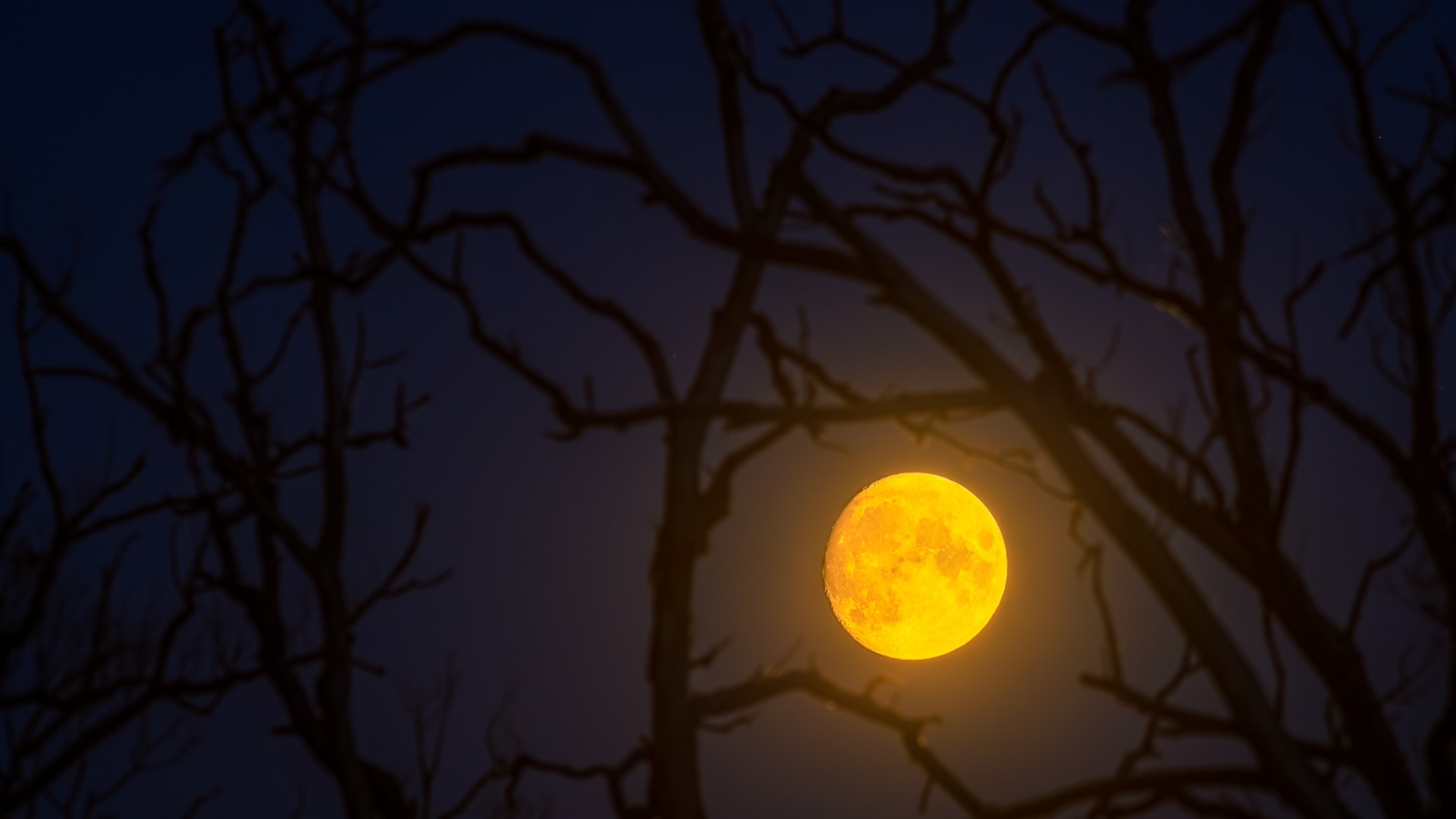Based on the latest national forecast, skies will be mainly clear on Halloween night across about three-quarters of the contiguous (48) United States, as costumed kids arrive at the door looking for candy or some other Halloween treat. Temperatures will be mostly in the chilly 40's across the northern tier states, 50's for the central states and balmy 60's across the south. Unfortunately, exceptions for fair skies appear to be across New England, New York State, Pennsylvania and New Jersey, parts of the Ohio Valley and Great Lakes and western Washington State and Oregon, where mainly cloudy conditions — and even some rain or spotty showers may fall, accompanied by a gusty breeze.
The rest of the country, however, will be in fine shape with mid-autumn stars and constellations plus a waxing gibbous moon and a bright planet shining prominently in the early evening sky. If you plan to accompany children around your neighborhood, you might want to enlighten them by pointing out some of those objects that will be visible in the sky.
At the top of the viewing list: The moon
On Halloween evening, as the shades of night are falling, you'll see Earth's nearest neighbor, our moon, hanging about one-third of the way up in the southeast sky. It will be in its waxing gibbous phase, 82% illuminated by the sun.
With a telescope at low power, you can point out to your young viewers the two most prominent of the myriads of craters that cover the lunar surface. Situated to the upper left of the center of the lunar disk, is the crater that has been dubbed "The Monarch of the Moon": Copernicus. Fifty-eight miles wide, 12,600 feet deep, surrounded by walls 14 miles thick.
The other lunar feature that truly "stands out," is evident over the lower limb of the moon, known as "The Metropolitan Crater": Tycho. It is among the brightest and youngest lunar impact craters, estimated to be 108 million years old, 53 miles wide and 15,400 feet deep. It is surrounded by a system of brilliant rays extending outward in all directions for many hundreds of miles. In several days, when the moon turns full, Tycho will give the moon the appearance of a peeled orange, with Tycho marking the point where the sections meet.
The Lord of the Rings
While the magnified views of the moon will certainly awe those who gaze at it through your eyepiece, take a moment and tell your young audience to make a clenched fist with their hands and then hold them out at arm's length. Now, tell them to go "two fists" to the left of the moon and they will see a bright star, shining with a yellow-white hue. Now, direct your telescope toward that "star" and when they gaze through the eyepiece, they will not be looking at a star at all, but a planet: Saturn.
This sixth planet out from the sun, just might be the most beautiful of all. Its rings are still readily evident, although currently they appear nearly edge-on with the south face tilted only about one-half degree to our line of sight. A telescope magnifying 30-power will bring them out; they appear as a bright line bisecting the ball of the planet. While this is far from their appearance compared to other years, the view should still look impressive to those who have never seen the ringed planet for themselves.
And watch out for fireballs!
Because they are active over Halloween, the Taurid meteor shower is sometimes called the "Halloween Fireballs." The bits of debris that make up the Taurids are a little larger than average, so they can result in brighter meteors and even fireballs, or exploding meteors (called bolides), that streak across the sky and leave incandescent trains in their wake.
While they are most active during the second week of November, a few forerunners can show up on Halloween night, darting from out of the east-northeast part of the sky. So, if you or your young visitors see something resembling a flare from a Roman candle sweeping majestically across the evening sky, it may very well be a Taurid meteor.
Related: How to photograph meteors and meteor showers
Helpful hints for young telescope viewers
In the September 2019 issue of The Astronomical League Magazine "Reflector," author Richard W. Schmude Jr., offered some tips for those who plan to do a public outreach for astronomy on Halloween:
"Firstly, children sometimes grab or touch the eyepiece, so use an inexpensive one. I gently warn children not to touch the telescope. In my area, parents have learned to tell their children not to touch the telescope. In some cases, a child will grab the eyepiece, causing the telescope to shift. For this reason, a Dobsonian telescope with a good finderscope is a good choice for Halloween outreach. A small stool or booster ladder may help very small viewers. Sometimes, parents hold their children up to look through the eyepiece. One may also place a monitor-connected video camera in the telescope and people can easily see the object on a screen." "Finally," adds Mr. Schmude, "I have my bag of goodies next to my telescope so that the children get two treats!"
Whatever your weather, Happy Halloween from all of us at Space.com!
Joe Rao serves as an instructor and guest lecturer at New York's Hayden Planetarium. He writes about astronomy for Natural History magazine, Sky and Telescope and other publications.

.jpg) 9 hours ago
1
9 hours ago
1

 English (US)
English (US)